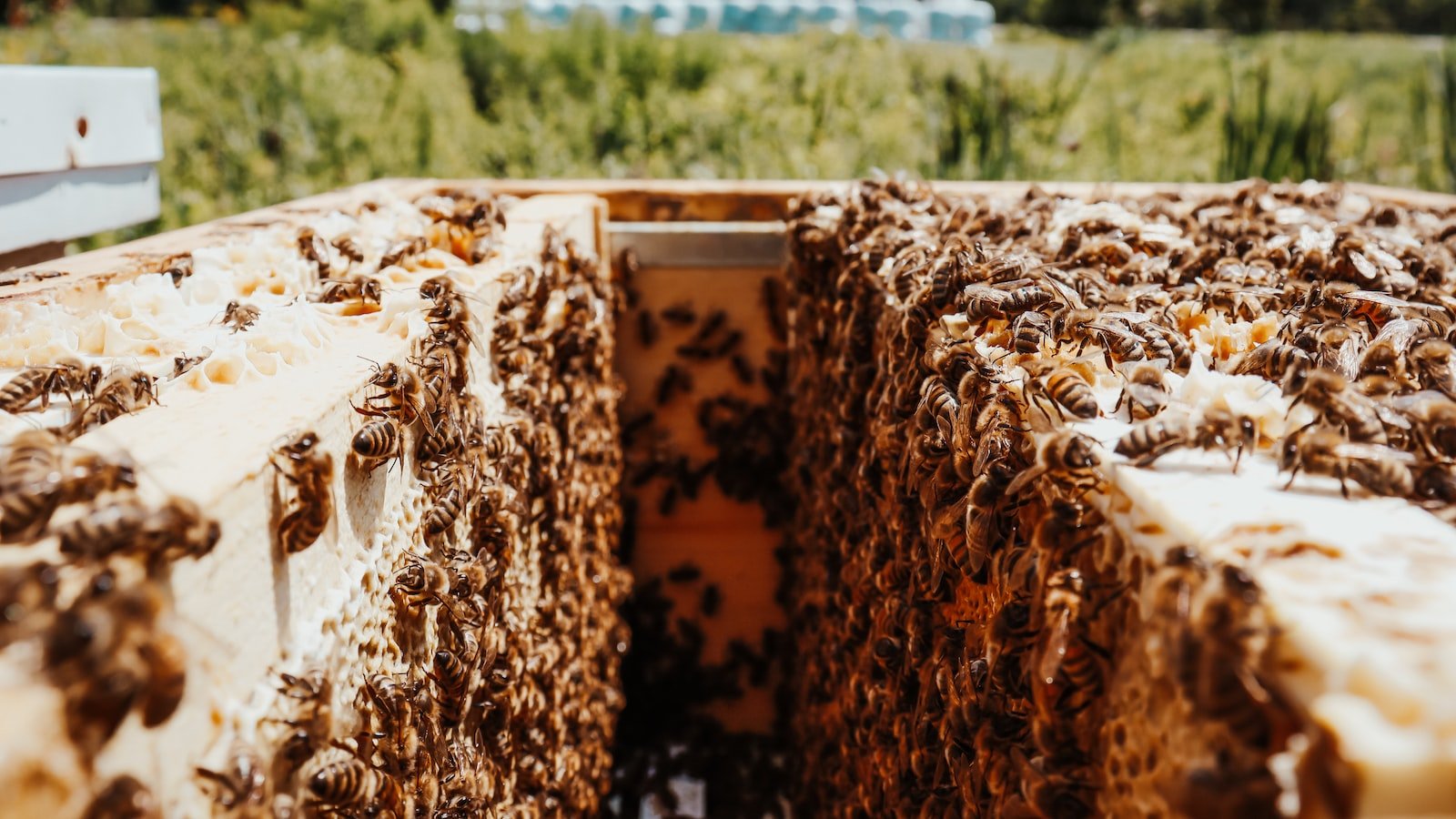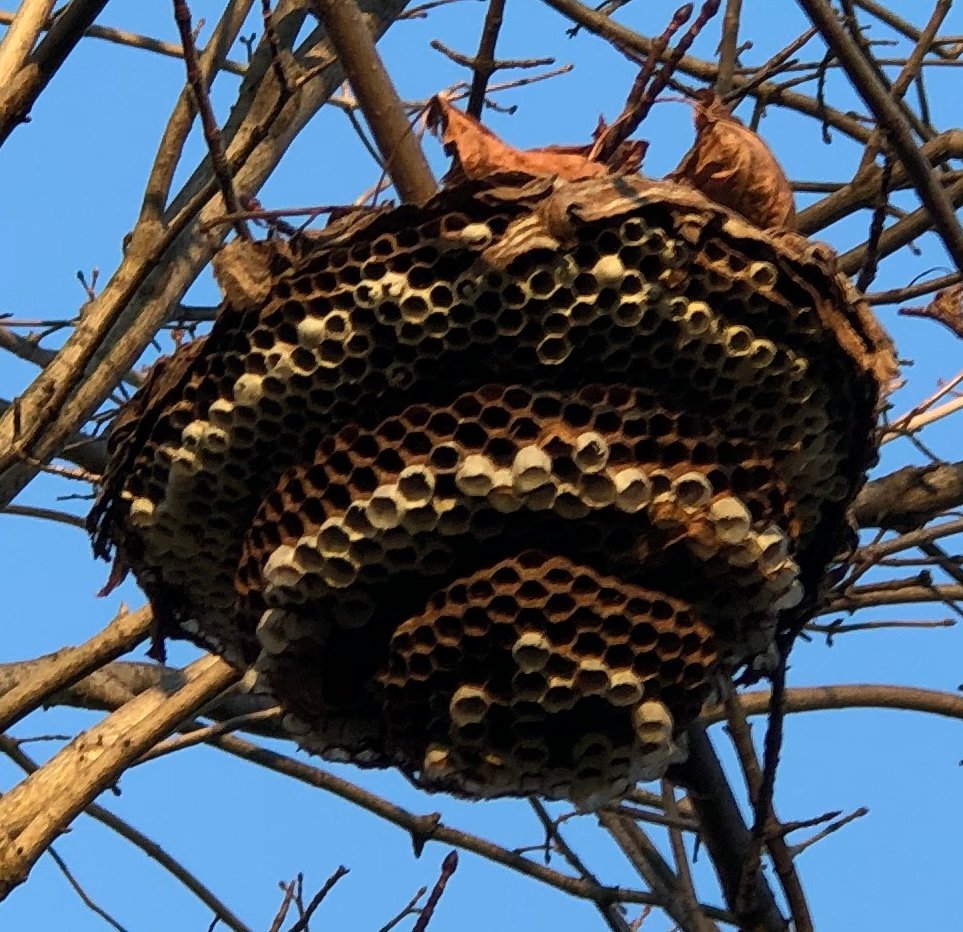Moving a beehive may sound like a daunting task, teeming with potential stings and sticky situations. However, with a dash of caution, a spoonful of preparation, and a dollop of efficiency, you can effortlessly transport your buzzing colony to its new location. Whether you are an amateur beekeeper or a seasoned apiarist, this hive-moving guide will equip you with the knowledge and confidence to ensure a smooth and secure journey for your precious pollinators. So, put on your beekeeping suit, grab your smoker, and let’s delve into the art of moving your hive safely and efficiently, one careful step at a time.
Table of Contents
- Preparing Your Hive for Transportation
- Choosing the Right Time and Weather for Moving Your Hive
- Securing Your Hive: Equipment and Strategies for Safe Transport
- Tips for Minimizing Stress and Maximizing Efficiency during Hive Transportation
- Ensuring Proper Hive Placement and Care after Relocation
- Q&A
- The Conclusion

Preparing Your Hive for Transportation
When it comes to moving your hive, taking the necessary steps to ensure its safety and the well-being of your bees is of utmost importance. Here are some essential tips to help you prepare your hive for transportation:
- Inspect the hive: Before you begin the process, carefully examine your hive for any signs of damage or deterioration. Repair or replace any broken frames, cracked boxes, or damaged screens to ensure the hive is structurally sound.
- Secure the frames: Frame movement during transportation can disrupt the colony and lead to stress for your bees. Before moving the hive, ensure that the frames are tightly secured using frame spacers or rubber bands to keep them in place.
- Minimize hive entrances: Reduce the number of entrances to one or two to prevent bees from escaping during transportation. This will also help maintain the internal temperature of the hive and prevent unwanted visitors from entering.
- Seal the hive: To prevent bees from escaping and potential loss during transit, seal the hive using straps, hive clips, or sturdy bungee cords. Ensure the hive is tightly closed but also allows for adequate ventilation.
- Protect the hive: Cover the hive with a securely fitted, well-ventilated top to shield it from sunlight, rain, and wind during transportation. This will also provide additional security and help maintain a stable internal environment.
- Transportation considerations: Plan the route and timing of your transportation to minimize stress on the bees. Avoid extreme temperature conditions and rough terrain whenever possible. Drive cautiously and take extra care to avoid sudden, jerky movements that could disturb the hive.
By following these guidelines, you can ensure a smooth and secure hive transportation experience for both you and your bees. Remember, their comfort and safety are vital to maintaining a thriving hive.

Choosing the Right Time and Weather for Moving Your Hive
When it comes to relocating your hive, timing and weather play significant roles in ensuring the safety and well-being of your bees. To make this transition as smooth as possible, here are a few key factors to consider:
- Temperature: Bees are incredibly sensitive to temperature changes, so it’s crucial to choose a day when the weather is mild and stable. Ideally, the temperature should be between 55-85°F (13-29°C) to minimize stress on the colony.
- Season: Planning your hive move during a time when the bees are less active, such as early spring or late fall, can be beneficial. These seasons offer cooler temperatures and reduced foraging, allowing the bees to adapt more easily to their new location.
- Weather Forecast: Before moving, closely monitor the weather forecast for potential rain or strong winds. Rain can impede the bees’ flight and navigation, while gusty winds can make it difficult for them to maintain their course. It’s best to select a day with calm, clear skies to ensure successful relocation.
Taking these considerations into account will help minimize stress and disruption to your hive, allowing your bees to adjust to their new surroundings comfortably. Remember, a smooth transition means happy bees and a thriving colony!

Securing Your Hive: Equipment and Strategies for Safe Transport
Transporting a beehive can be a delicate task that requires careful planning and preparation to ensure the safety of both the bees and yourself. Here are some essential equipment and strategies to consider for a successful and secure hive transport:
1. Protective Gear: Before attempting to move a beehive, make sure you are equipped with a full set of protective gear, including a bee suit, gloves, and a veil. This will provide a crucial barrier between you and the bees, minimizing the risk of stings and ensuring a safe transfer. Remember to fasten all zippers and securely tie any loose ends to prevent any accidental entry of bees.
2. Hive Straps and Bands: Stabilizing the beehive during transport is vital to prevent any disturbances or damage to the colony. Use sturdy hive straps or bands to secure the hive components tightly together. This will ensure that the frames stay in place, preventing turbulence and potential injury to the bees.
3. Ventilation: Bees require proper airflow even when being transported. Ensure that the beehive has sufficient ventilation to maintain an optimal internal temperature and prevent overheating. Place ventilation screens or mesh on the hive entrance to allow for proper air circulation. Check periodically throughout the journey to ensure that the bees have a healthy supply of fresh air.
4. Proper Handling: When moving the hive, always lift from the bottom to avoid damaging the frames or disrupting the bees. Tilt the hive gently to check for any loose or unsecured components before securing it in the transportation vehicle. Remember to drive cautiously, avoiding sudden movements or abrupt stops that could jostle the hive.
5. Timing: Choose the best time of day and weather conditions for transporting your hive. Ideally, move the hive during late evening or early morning when the majority of bees are inside. Additionally, avoid transporting the hive during extreme temperature conditions or inclement weather to minimize stress on the colony.
By equipping yourself with the right gear, using secure methods for hive stabilization, ensuring proper ventilation, handling the hive with care, and choosing the ideal timing, you can successfully transport your hive to its new location while guaranteeing the safety of your bees and a smooth transition. Remember, a well-secured and thoughtfully transported hive leads to happy and productive bees!
Tips for Minimizing Stress and Maximizing Efficiency during Hive Transportation
Transporting hives of bees can be a daunting task, but with the right strategies, you can minimize stress and maximize efficiency throughout the process. Here are some tips to help you ensure a smooth and successful journey for your buzzing companions:
– **Prepare your equipment**: Before embarking on the transportation adventure, double-check that all your equipment is in good condition. Inspect hive components, such as frames and covers, to make sure they are sturdy and secure. Additionally, ensure you have enough ventilation for the bees and seal any possible escape routes to avoid mishaps during transit.
– **Secure your hives**: During transportation, it is crucial to secure the hives properly to prevent them from shifting or overturning. Strap your hives tightly but not too firmly, allowing for slight movements due to natural vibrations. Consider using ratchet straps or bungee cords to provide extra stability. Remember, a secure hive leads to happy and tranquil bees.
– **Maintain optimal conditions**: Bees thrive in a specific environment, so it is important to maintain optimal conditions throughout the journey. Keep the hives out of direct sunlight and away from extreme temperatures. Adequate ventilation is essential, especially during hot weather, to prevent overheating. Make sure to provide some shade and keep the hives well-ventilated to ensure the health and well-being of your buzzing companions.
Remember, minimizing stress during hive transportation is crucial for the well-being of your bees. By following these tips, you can help create a calm and efficient environment that will make the journey more enjoyable for both you and your flying friends.
Ensuring Proper Hive Placement and Care after Relocation
Relocating a beehive requires careful consideration and attention to detail to ensure the health and well-being of your buzzing residents. Once you’ve successfully moved your hive, it’s important to provide a suitable new home and maintain proper care to support the colony’s vitality. Here are some essential steps to take:
- 1. Location, Location, Location: Choose a spot for your hive that offers protection from strong winds, extreme temperatures, and direct sunlight. Ideally, it should have a nearby water source, away from constant human traffic to prevent disturbances.
- 2. Adequate Ventilation: Bees require appropriate ventilation within their hive, as proper airflow prevents excess moisture and heat buildup. Ensure that your hive has proper ventilation features, such as screened bottom boards and ventilation holes.
- 3. Placing the Hive: Position the hive on a stable, level surface. By using a hive stand or platform, you can elevate the hive slightly, allowing for improved airflow and reducing the chances of waterlogging during heavy rainfall.
- 4. Hive Orientation: Aim the hive entrance towards the southeast or east. This allows the hive to benefit from the early morning sun, encouraging the bees to start foraging earlier in the day.
- 5. Regular Inspections: After relocating your hive, perform routine inspections to monitor the colony’s progress. Check for signs of disease, pests, and any potential issues, ensuring prompt action if needed to maintain colony health.
By following these guidelines and offering your relocated hive a safe and nurturing environment, you provide the bees with the best chance to thrive and produce delicious honey for you to enjoy.
Q&A
1. What are the necessary preparations before moving your hive?
Make sure to secure the hive’s entrance with a screen or reduced entrance size to prevent bees from escaping during transit. Additionally, strap the hive securely to prevent any movement or shifting during the process.
2. Can I move my hive during daytime?
It is generally recommended to move hives during the evening or early morning when most bees are inside. This will minimize disturbance to the colony and help ensure their safety during transportation.
3. How should I handle the frames inside the hive?
Before moving, it is important to secure the frames in place. Make sure they are tightly spaced and fix them with rubber bands or specialized frame holders to prevent shifting or damage to the comb during transportation.
4. Is it necessary to seal the hive during transportation?
To prevent bees from escaping during transit, it is crucial to close all hive entrances securely. However, ensure proper ventilation is provided by drilling small holes in the hive cover or using a mesh screen.
5. How should I transport the hive?
Place the hive in a well-ventilated, sturdy vehicle such as a truck or trailer. Ensure a level and steady position, avoiding sudden movements or rough terrain. Never transport the hive inside your personal vehicle due to safety concerns.
6. How far can I move my hive without disturbing the bees?
Bees can typically adjust to a new hive location within a few miles without major issues. If you need to move them farther, gradually shift the hive a few feet per day over several days until you reach the desired location.
7. What precautions should I take after moving the hive?
Once the hive is in its new location, open the entrance and remove any straps that were used for transportation. Allow the bees a day or two to reorient themselves to their new surroundings before conducting any inspections or manipulations.
8. Is it advisable to relocate hives during extreme weather conditions?
It is best to avoid moving hives during extreme weather conditions such as hot summer days or freezing winter temperatures. Bees are sensitive to temperature changes, so plan the move during mild weather for their comfort and safety.
9. Can I transport multiple hives together?
Transporting multiple hives together is possible, but each hive should be secured individually to avoid collisions or shifting during transit. Ensure enough space is provided between hives to prevent bees from mingling and potentially causing disruptions.
10. How can I make the moving process less stressful for the bees?
Reducing stress for bees during relocation is crucial. Minimize vibrations, temperature fluctuations, and jolts as much as possible. Handle the hive gently, avoid loud noises, and maintain a smooth and steady transport to ensure the well-being of the colony.
The Conclusion
As you embark on your journey to relocate your buzzing companions, remember that safety and efficiency are essential to ensure a smooth transition for your precious hive. With this article as your guide, you are equipped with invaluable knowledge and practical tips to make the task seem as easy as the gentle dance of bees themselves.
Just like orchestrating a symphony, relocating a hive requires meticulous planning and a gentle touch. By following the steps outlined in this article, you’ve taken the first stride towards harmonizing with nature as you prepare to transport your hive to its new abode. Remember, the soul of your apiary lies within these diligent workers, so it is crucial to treat their home with utmost respect and reverence.
Take a moment to appreciate the intricacies of your buzzing companions, as they effortlessly navigate through their well-structured home. Your hive has been a haven of hard work, dedication, and cooperative effort, resulting in the liquid gold we know as honey. Now, as you seek to relocate them, let us delve deeper into the art of preserving their harmonious existence.
Efficiency is the key to a successful move: plan, prepare, and prioritize. Before the bees set off on their next adventure, ensure that you have secured an appropriate new location, laden with abundant nectar sources and a pleasing ambiance for these winged artisans. Choose a time when the majority of the foragers are out, allowing for a seamless transition that minimizes any disruption to their delicate work.
Much like a gardener tending to their plants, take care to protect each member of your hive family during their voyage. Provide them with a secure and proper temporary housing option, ensuring their comfort throughout the journey. Shield them from unwelcome vibrations, temperature fluctuations, and other elements that may pose a threat to their well-being.
Remember, dear apiarist, that relocation should be both a safe and fruitful endeavor. Be vigilant throughout the process, remaining attentive to the needs and behavior of your buzzing comrades. Respond to their slight shifts in temperament or signs of unease, just as you would to the gentle sway of a daisy in the wind.
As your hive ventures forth, embrace the excitement in your heart – a blend of anticipation, respect, and awe. You, the steadfast caretaker, are about to witness the beauty of adaptation as your bees settle into their new home. Allow yourself to marvel at their resilience, their quiet determination, and their remarkable capacity to thrive in unfamiliar surroundings.
With the wisdom you have acquired, your hive will flourish under your watchful eye. Cherish the interdependence between yourself and these miraculous creatures, for in this symbiotic relationship, lies an endless source of learning and discovery. So, arm yourself with patience, compassion, and a continued thirst for knowledge as you venture into the captivating world of beekeeping.
As you close this chapter on relocating your hive, remember that your role as a guardian of bees is both rewarding and worthy. Together, let us protect and nurture these remarkable creatures, for in safeguarding their existence, we preserve the delicate balance of our precious ecosystem. Safe travels, dear apiarist, as you bring your beloved hive to new heights, forever entwined in the dance of nature.
As an affiliate, my content may feature links to products I personally use and recommend. By taking action, like subscribing or making a purchase, you’ll be supporting my work and fueling my taco cravings at the same time. Win-win, right?
Want to read more? Check out our Affiliate Disclosure page.